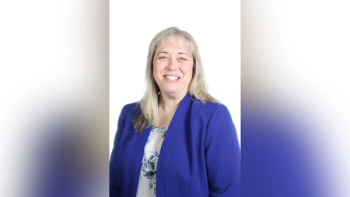
Central Monitor: A Key Driver of Centralized Monitoring
With the introduction centralized monitoring in a risk-based monitoring (RBM) approach, the central monitor is emerging as a key and important role.
Centralized monitoring offers many of the capabilities of on-site monitoring as well as additional capabilities. With the advent of various eClinical technologies, analytical and visualization tools, it is easy to check the data and reports centrally or remotely. In fact, the regulators encourage use of centralized monitoring techniques wherever appropriate. With the introduction centralized monitoring in a risk-based monitoring (RBM) approach, the central monitor is emerging as a key and important role in successful implementation of this new monitoring approach. As the central monitor would be checking the study data and risk reports on real-time basis using appropriate technology to monitor data quality, patient safety and relevant risks, he/she would be the first person to detect any study related risk/issue(s). Therefore, considering overall objectives of centralized monitoring, the central monitor plays a vital role in this process and is a key driver to facilitate the process. At the same time, as the process is still evolving, it will take some time to fine-tune responsibilities or job description of the central monitor in the market. However, considering the scope of centralized monitoring and RBM processes, the following could be the key responsibilities of the central monitor that one can consider to make justice to this role.
Responsibilities of a Central Monitor
- Ongoing/periodic monitoring of patient data, site data centrally using appropriate technology for single or multiple studies to ensure high data quality and patient safety
- Monitoring of risk reports, data trending related to quality, safety, efficacy (effectiveness), site performances, budget etc., generated by analytical and visualization or risk management tool
- Facilitating early identification of risk/issue(s) occurring during study conduct and responsible for identification risk alerts, timely escalation of risk/issue(s) to relevant stakeholders ( e.g. study manager, on-site monitors/CRAs) and tracking of risk/issue(s) until resolution
- Keeping track of site performances and helping on-site monitors/study managers plan timely corrective actions
- Act as a single point of contact for relevant stake-holders (on-site monitors, study managers, safety/medical monitors, data managers, etc.) for allocated risked based centralized monitoring studies and ensure timely communication, coordination with these stakeholders
- Keeping on-site monitors well equipped with the details of site related risk/issue(s) to plan timely site intervention ( site visits or telephonic contacts with sites) and to make them more efficient, focused during monitoring visits
- Supporting in optimization of SDVs and in turn reduce on-site monitoring visits
- Responsible for documentation of centralized monitoring activities e.g. risk/issue(s) findings, escalation, tracking and resolution etc., during study conduct etc.
- Attending review meetings with the relevant stakeholders needed for tracking/controlling of risk/issue(s)
- Supporting in building overall efficiencies in clinical trial monitoring operations
Depending on the organization structure and how they want to place the central monitor role with the existing resources, this role can also be involved early in the process to support risk identification, risk assessment, finalizing thresholds/triggers and risk action planning as well.
Central Monitor - Background/Qualification
As the central monitor is a new role, one can consider the following qualification aspects to identify a right resource for this role.
- Past extensive experience in clinical monitoring or data management activities
- Knowledge of overall clinical trial management process, understanding of the protocol, study associated risks and their significance
- Critical thinking and analytical skills to understand/ analyze complex data and provide insight into risk reports, trends and outliers in data etc.
- Therapeutic area specific experience and knowledge
- Excellent communication, coordination skills and tech savvy to use the relevant technology effectively
The central monitor is emerging as a new role to support new initiative of centralized monitoring and RBM, therefore, the right training needs to be given to the qualified person to ensure fulfillment of responsibilities of this new role. Moving forward, as the industry gets more experience in the process and the process gets standardized, the industry will witness further enhancement and fine-tuning in the role and responsibilities of the central monitor. At the same time, the new role of central monitor offers opportunity for on-site monitors/CRAs (who are interested in getting into this new role) to get trained and developed the expertise to perform the central monitor’s role.
Ashok Ghone, PhD, is Vice-President, Global Services at MakroCare USA.
Newsletter
Stay current in clinical research with Applied Clinical Trials, providing expert insights, regulatory updates, and practical strategies for successful clinical trial design and execution.




